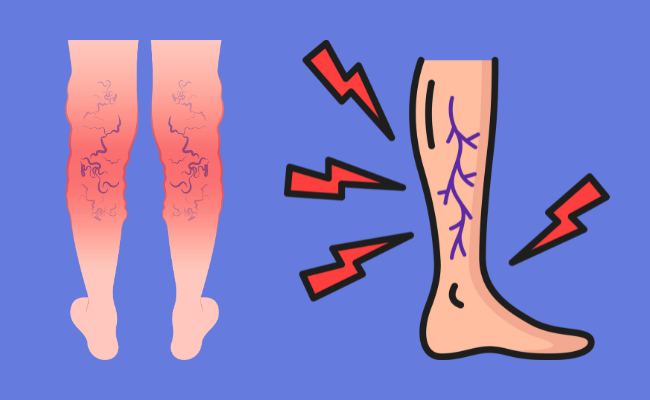How to Treat Phlebitis?
- December 15, 2023
- No Comments

What is Phlebitis?
Phlebitis, the inflammation of veins, commonly occurs in the legs but can impact veins throughout the body. It includes both superficial and deep veins, with superficial phlebitis affecting surface veins and deep vein thrombophlebitis posing a higher risk of blood clot formation. A comprehensive understanding of causes and treatments is crucial for effective management.
Phlebitis, characterized by vein inflammation, may result from vein wall damage or blood clot obstruction. Blood clots can form in superficial or deep veins, with deep vein thrombophlebitis, also known as deep vein thrombosis (DVT), signifying a more serious condition. A prompt grasp of causes is crucial for successful treatment and management.
Why Does Phlebitis Occur?
Phlebitis can be caused by various factors, and the underlying reasons may vary. Common causes include injury to the vein, intravenous catheters, blood clotting disorders, prolonged inactivity, and inflammation due to conditions like vasculitis. Superficial phlebitis is often associated with the insertion of IV lines or trauma to the vein, while deep vein thrombophlebitis can be linked to conditions such as deep vein thrombosis (DVT). Identifying the root cause is essential for determining an appropriate treatment plan.
How is Phlebitis Diagnosed?
Diagnosing phlebitis typically involves a combination of medical history review, physical examination, and diagnostic tests. A healthcare provider will inquire about symptoms, risk factors, and potential causes. Physical examination may include assessing the affected area for signs of inflammation, such as redness, swelling, and warmth. To confirm the diagnosis and determine the extent of the condition, imaging tests such as ultrasound may be employed. Ultrasound can visualize blood flow and detect blood clots in the veins, helping healthcare professionals tailor the treatment accordingly.
Treatment Solutions for Phlebitis
Pain Management:
- Nonsteroidal Anti-Inflammatory Drugs (NSAIDs): Over-the-counter NSAIDs like ibuprofen can help alleviate pain and reduce inflammation associated with phlebitis. However, these medications should be used under the guidance of a healthcare professional.
- Pain Relievers: Prescription pain relievers may be recommended for severe pain. These may include stronger NSAIDs or other pain medications.
Compression Therapy:
- Compression Stockings: Wearing compression stockings can aid in reducing swelling and promoting blood circulation. These specially designed stockings apply gentle pressure to the legs, helping prevent blood from pooling and diminishing symptoms.
Anticoagulant Medications:
- Blood Thinners: In cases of deep vein thrombophlebitis, anticoagulant medications may be prescribed to prevent the formation of blood clots. Common anticoagulants include warfarin and direct oral anticoagulants (DOACs).
Elevating the Legs:
- Gravity Assistance: Elevating the affected leg can assist in reducing swelling and improving blood flow. Keeping the leg elevated above heart level when resting can be particularly beneficial.
Warm Compresses:
- Localized Heat Therapy: Applying warm compresses to the affected area can help soothe pain and reduce inflammation. It's essential to avoid excessive heat, as it can worsen symptoms.
Intravenous Antibiotics:
- For Superficial Phlebitis: If the inflammation is associated with an infection, intravenous antibiotics may be prescribed to address the underlying bacterial cause.
Benefits of Treating Phlebitis
- Preventing Complications: Timely and appropriate treatment of phlebitis can prevent complications such as the spread of infection, the development of blood clots, or the progression to more severe conditions like deep vein thrombosis.
- Pain Relief and Improved Quality of Life: Effective management of symptoms through pain relief and reduction of inflammation enhances the overall quality of life for individuals with phlebitis. This allows them to carry out daily activities with greater comfort.
- Reducing the Risk of Recurrence: Following a comprehensive treatment plan can reduce the risk of phlebitis recurrence. This may involve lifestyle modifications, such as staying active, maintaining a healthy weight, and addressing underlying medical conditions.
- Minimizing Long-Term Complications: By addressing phlebitis promptly, the risk of long-term complications, such as chronic venous insufficiency, is minimized. Chronic venous insufficiency can lead to swelling, skin changes, and leg ulcers.
- Enhancing Vascular Health: Treatment not only alleviates immediate symptoms but also contributes to overall vascular health. Managing risk factors, such as obesity and inactivity, promotes a healthier circulatory system.
Comments (0)